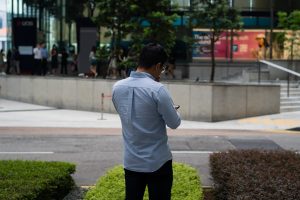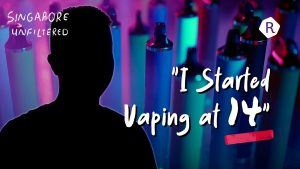Have you walked through a cloud of sweet smelling, fast dissolving smoke lately? At this point, I’d bet that you have. It’s no secret that vaporisers and e-cigarettes are prevalent in Singapore. Their presence has been discussed ad nauseum in mainstream media outlets. From cautionary tales penned by health experts to school teachers who are concerned for the wellbeing of the Singaporean youth. The consensus (from the media at least) is that vaping is scary and bad.
There are a few reasons cited by the well intended fear mongers: unstudied long-term health effects, dubious marketing materials aimed at teens, and vape related fatalities overseas. It seems all parties can agree that vaping is rife in Singapore. What goes unremarked upon, though, is the immediate health threat that unregulated black market products pose to the public.
A Thriving Black Market
Channel News Asia reported that there is a plethora of digital avenues to access illegal vaping devices and accessories. In fact, if one knows where to look, it isn’t hard to find them at all. Sellers mostly hawk their wares on Telegram (which has end-to-end encryption), but listings for vape products have popped up on Carousell, Lazada, and Shopee too. Non-encrypted technologies and online public marketplaces are easier to police, and in 2020, the HSA collaborated with social media platforms to remove over 2,000 of these listings.
What exactly is the scale of the black market, though? CNA mentioned there were several groups with up to 10,000 members, which RICE has verified in our own investigation. At press time, some groups have grown closer to 20,000 members. Inside these group chats, new listings and offers are posted every second. Clearly, the removal of listings by HSA (presumably off non-encrypted platforms) has not significantly dented the black market activity on Telegram and WhatsApp.
It’s hard to describe the scale of the black market without getting into specifics on what’s available, but here’s a non-exhaustive list of what can be found on Telegram: DIY vaporiser tanks, reusable coils, disposable (one use) vapes, a home delivery service which refills the disposable (one use) vapes, reusable vape devices with nicotine salt cartridges, cartridges from established overseas brands, cartridges from dubious brands, e-juice in any flavor you can imagine, chargers, and bundles with combinations of any of the above.
Because the market is overflowing with suppliers, pricing has gotten competitive. From our own research, we’ve witnessed a significant drop in cost over the last six months. When the market was nascent, a pack of vape pods cost close to $30. Now that the pool of suppliers has expanded, the same amount goes for >$25. Due to market growth, sellers are upping their CX. One can pay extra for same day delivery, or fetch a discount by self-collecting an order from a pick up point.
The bootleg products seem to be arriving on all fronts. In October of last year, more than 5,000 vaporisers & paraphernalia were intercepted at Tuas Checkpoint by ICA. Despite the border closures, products seem to be making their way through to Singapore in Malaysian – registered lorries. On the same day as the Tuas Checkpoint seizure, there was another catch of 24,000 vape products at the Changi Airfreight Centre.
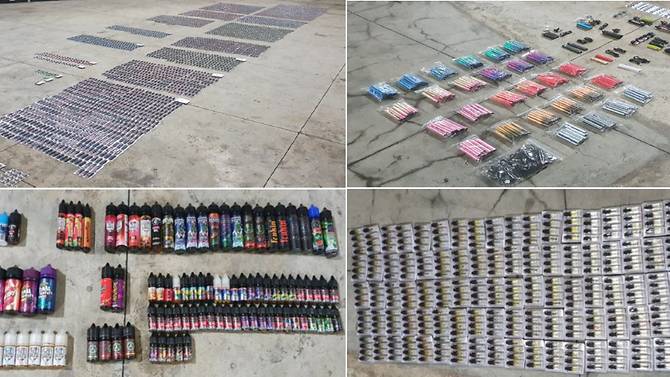
Black markets thrive when consumer demand overlaps with hard regulation. In the past five years, the e-cigarette industry has exploded with popularity. Globally, the industry is expected to have a valuation of USD $45,000,000,000 by 2026. Singapore is not immune to global trends, and this is clear through the thriving black market.
In 2018, local authorities quickly clamped down on the sale and use of e-vapourisers in Singapore. A lack of clinical research and some unexplained vape related fatalities were cited. However, for Singapore, it might be worth considering regulation at this juncture instead of only doubling down on the outright ban.
There are a few reasons which justify regulation at this point: firstly, the scientific evidence has advanced tremendously in the past three years. It has since come to light that the vape-related fatalities cited by the authorities as a reason for prohibition, were induced by toxic levels of Vitamin E and THC in unregulated black market products. In fact, current medical science indicates that while it’s not harmless, vaping is almost certainly healthier than smoking. In the United Kingdom, the PHE has identified e-vapourisers as a safe and key component of their national tobacco cessation strategy.
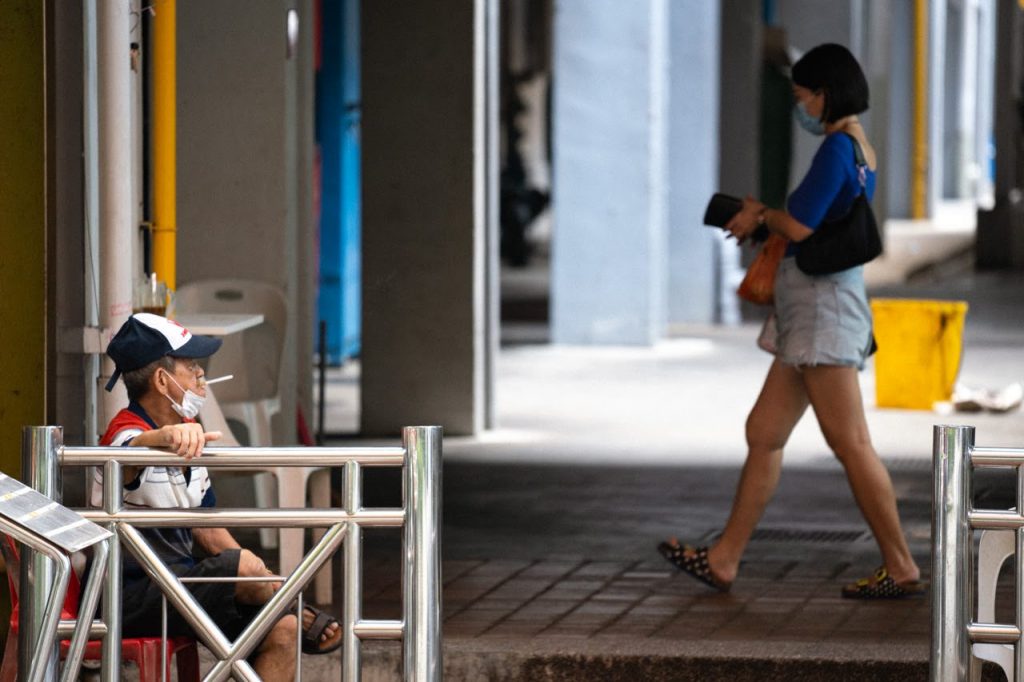
Another concern which would be solved by regulation: Youth access to e-vapourisers. Implementing appropriate taxes, enabling oversight by local health authorities, and designating specific points of sale, would help deter young people from participating. Regulation would also make a dent in the black market and reduce supply, which is where young people have the most immediate access, anyway.
Ironically, Amrin Amin (Secretary for Health and Home Affairs) made this point while using the tobacco industry as an example. “The banning of cigarettes, given the existing pool of smokers, will give rise to black markets and increase the flow of smuggled cigarettes into Singapore.” The same logic can be applied to the local vape black market as well: The banning of vaporisers, given the existing pool of vape users, has given rise to black markets and increased the flow of smuggled vape products into Singapore.
The final reason why the black market continues to thrive is the lack of harsher punishments for offenders. Illicit vapes are not treated with the same severity as Class A drugs. Perhaps, this is because the market is hard to trace. On end-to-end encrypted services, it’s near impossible to surveil offenders, and much harder to prosecute. The vast majority of the black market operates on Telegram, and the reported offenders who have been fined were caught selling on non-encrypted platforms like Carousell, Lazada, and Instagram. Though there are hefty fines for repeat offenders, those charged with first time possession are typically fined $500 and jail time is rarely handed down for either offence.
What Are The Health Risks On The Black Market?
In the absence of regulation, the black market is run by anonymous sellers who stock a wide variety of products. In our investigation, we found the most commonly available products are created by a mammoth Chinese e-cigarette manufacturer. According to our research, the laboratories of this Chinese manufacturer have a stringent, 18 step quality control process. The company invests millions of dollars into R&D, while engaging medical experts and scientists to manufacture products which are safe for use.
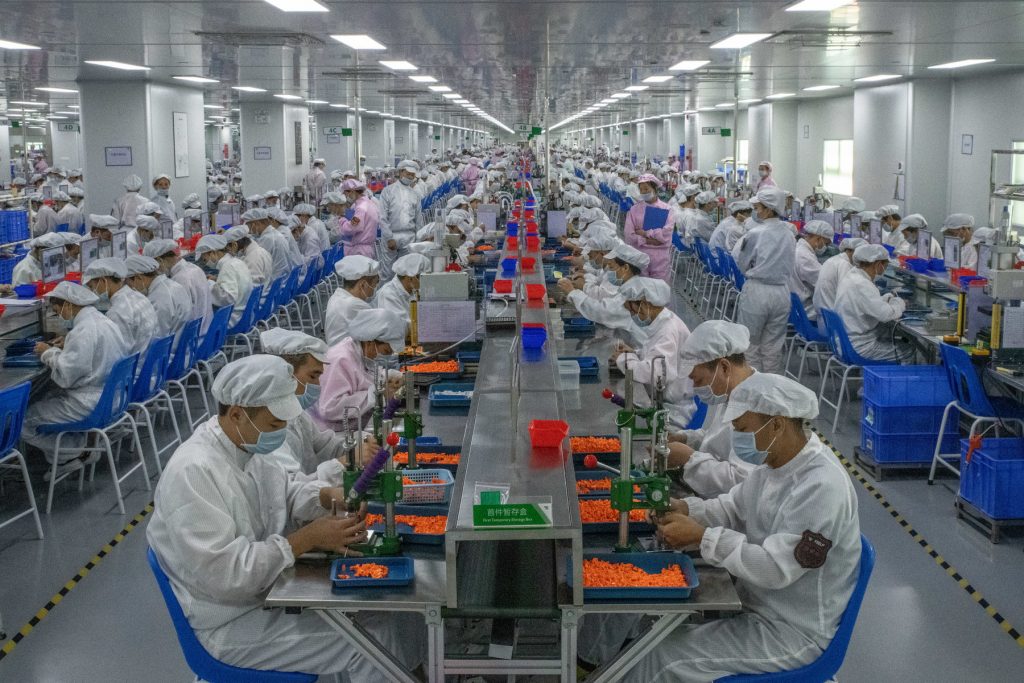
When the Chinese products are purchased from a verified source, they are labeled with QR codes which inform the user where the product was manufactured. This includes batch numbers and expiration dates. However, these safety measures undertaken by the company are flattened on the unregulated black market.
If the consumer has never encountered a legitimate product before, realistically, how can one deduce whether it is counterfeit or not? Copycat devices and accessories of this Chinese brand are rife in the Telegram chats. To the untrained eye, tell-tale signs of a counterfeit are tricky to spot. Moreover, the majority of copycat products are compatible with the legitimate devices, which further complicates the buyer’s discernment.
In April 2020, the Chinese manufacturer conducted an investigation into the contents of counterfeit pods. The results were concerning. Nicotine percentages were 58% higher than the advertised 5%, and the levels of Toluene (which can cause central nervous system depression and arrhythmias) were concerningly high. In their report, the Chinese manufacturer included pictures of the dangerous counterfeit products. Are these counterfeits circulating in Singapore as well? Without a ‘safe’ standard to refer back to from regulation, it’s impossible to tell.
Is There A Path Towards Regulation In Singapore?
We spoke with Sean Ang—a community pharmacist and smoking cessation counsellor to gain a better understanding of how Singapore could proceed with e-cigarette regulation. From his perspective, even if e-vapourisers were legalised, “it would likely be used as a prescribed cessation tool’’ as this approach “requires medical testing, to ensure that the products are consistently effective.”
Mr. Ang further noted that local health authorities are hesitant to normalise addiction. “Take smoking for example. If cigarettes were banned tomorrow, there would be riots. It’s hard to get the public to abstain from something which has been normalized. In my opinion, shisha was banned for this reason, so that it wouldn’t become normalised.”

When we asked about regulation for commercial use, Mr. Ang believed this was a pipe dream. “Because the medical literature on vaporisers (even as a cessation tool) is nascent, if they allowed it now and discovered down the line that it was extremely harmful, then decided to impose a ban—it would be tough to get people to stop.”
Mr. Ang went on to comment on the lack of urgency on this matter, despite the expanding black market. “Nicotine addiction is not a pressing issue. We have fairly low rates of smokers, which is why our cessation efforts are no longer excessive. I think the black market problem extends beyond the e-vapourisers. Look at it this way: no matter the price of an illicit activity, there’s always demand.”
To play devil’s advocate, RICE mentioned to Mr. Ang that Singapore could tackle the problem of e-vapourisers with a harm reduction approach. The principles of this public health ideology respects the autonomy of the substance user, and works to facilitate safe substance use instead of imposing harsh restrictions, which drives the user to the black market. Though it sounds straightforward and utopian, Mr. Ang rebutted that this notion is incongruent with Singapore’s hard-line stance on substance abuse in general. It’s also a contradiction to the extensive efforts which the HPB have taken to install nationwide cessation programs. However, this doesn’t mean that it’s not worth considering, given the health risks posed by the widespread sale of black market products.
Ultimately, the discourse on e-cigarettes strikes at the central conflict of policy makers in Singapore. Is it possible to be progressive and pragmatic? If not, what takes precedence? If we continue to de-normalise and ban vape use, we will expose nicotine users (close to 3% of our population) to black market products which carry substantial health risks. On the other hand, it’s worth considering if a more enlightened approach can be adopted, to regulate e-cigarettes as we already do with cigarettes, minimising black market risks and ascribing accountability to stakeholders.
What are your thoughts on these developments? Tell us at community@ricemedia.co.


